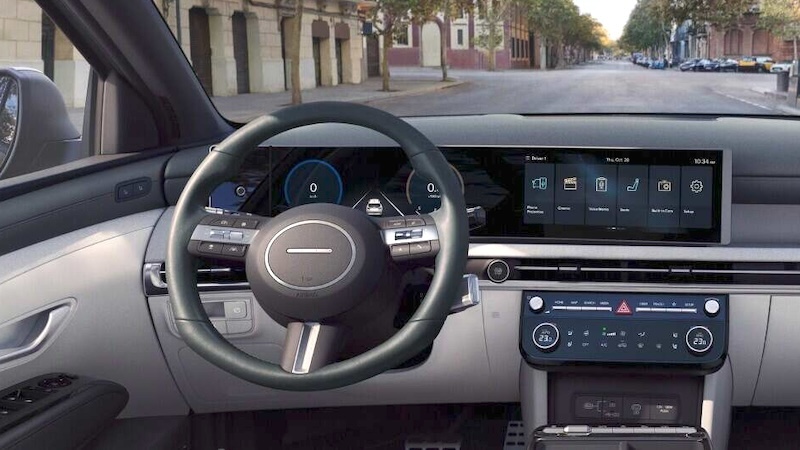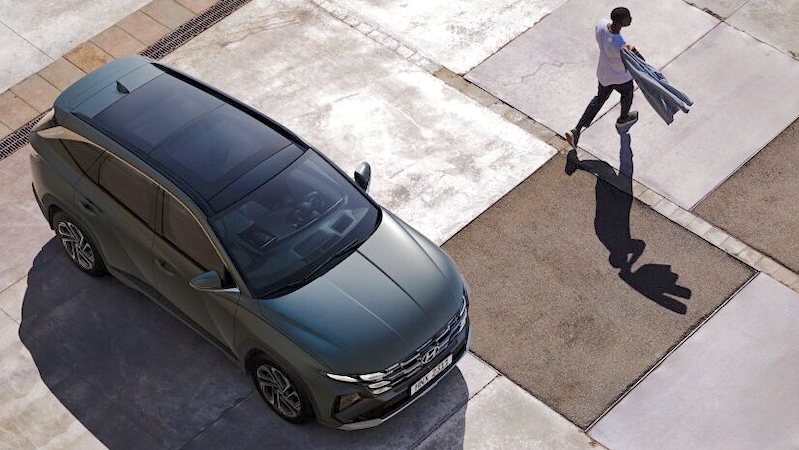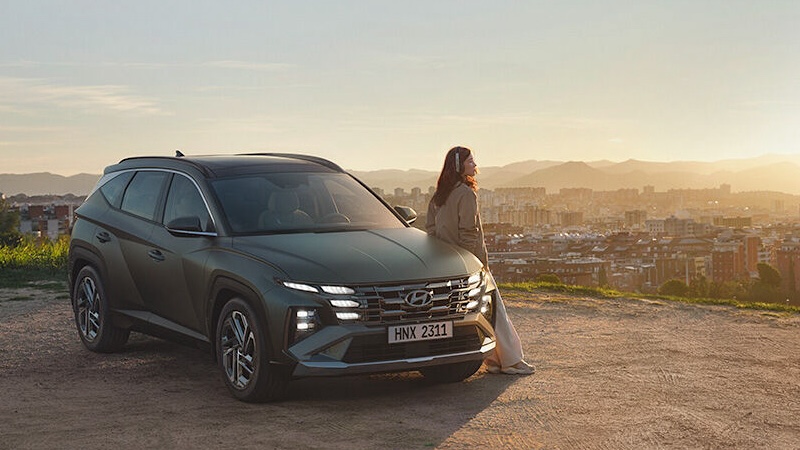The updated Hyundai Tucson is due to arrive in South Africa before the end of 2024. This is what you can expect.
Since its debut in 2004, the Hyundai Tucson has become a staple for South African drivers, earning its status as a reliable family car. It’s one of Hyundai’s crown jewels, helping to cement the company’s fourth place (locally) on the list of best-selling passenger car brands.

Building on this legacy, Hyundai is updating the fourth-generation Tucson, which had its market launch way back in 2020.
A mild exterior refresh
The updated Tucson maintains the progressive appeal of its predecessor while introducing fresh updates. It features redesigned bumpers with new skid plates, reimagined daytime running lights, and a refined grille.

Additionally, the model offers a revamped line-up of alloy wheels and five new colours, including Cypress Green Pearl, Jupiter Orange Metallic, and Sailing Blue Pearl.

The N Line variant also sees updates, including dedicated front and rear bumper designs, updated grille meshes, N Line 19” alloy wheels, and body-colour wheel arches and sides.
Bigger changes inside
The biggest difference inside is the repositioning of the central touchscreen to form a unit with the driver’s instrument display, à la Mercedes-Benz. Underneath this two-as-one screen, a horizontal air-vent ‘bar’ runs the width of the dashboard.
This separates the screen(s) from a redesigned console that operates the cars temperature settings, complete with two rotary dials and physical buttons for quick (and safe) adjustments.

The update also features a new centre armrest, while an elegant three-spoke steering wheel replaces the odd-looking tiller of the pre-facelift Tucson.
A significant change is the repositioning of the gear selector to the steering column (see image below).

Advanced technology
Hyundai is introducing over-the-Air (OTA) updates to the Tucson range, ensuring the car is always equipped with the latest software, while updated infotainment capabilities improve functionality.
The Hyundai Digital Key 2.0, featuring Ultra-Wide Band technology, allows for keyless entry and start, further enhancing convenience and safety.

The update also introduces Rear Occupant Alert (ROA), which alerts the driver when motion or breathing is detected in the car after exiting. We assume this is to prevent a preoccupied owner from leaving a pet snake, hamster, or child in the car in hot weather.
In the apex model, the Intelligent Front-Lighting System (IFS) with matrix beam LED technology adapts to road conditions. This ensures optimal and targeted illumination, a crucial safety feature, and reduces glare for other drivers.

Enhanced features and safety
Hyundai has equipped the fourth-generation Tucson with an enhanced features package to meet the evolving demands of drivers.
The Advanced Driver Assistance Systems (ADAS) now include Crosswind Stability Control (CWC), which improves driving stability by applying partial braking and steering torque control during strong winds.
An upgrade to USB C-type connectivity offers faster data transfer and charging capabilities
Same ‘old’ engines
Love or hate them, the current engine duo is likely to remain. It consists of the 2,0-litre petrol (115 kW and 192 Nm) with 6-speed auto ’box and the muscular 2,0-litre turbodiesel (137 kW and 416 Nm) with the 8-speed automatic transmission. Mind you, there’s nothing to hate about the 2,0-litre diesel, except for shelling out at least R800k to have it.
If we had any say in the matter, we would swop the Tucson’s 2,0-litre petrol engine out with the Kia Sportage’s 1,6-litre turbo petrol mill (132 kW and 265 Nm) or the 1,6-litre turbo-diesel (100 kW and 320 Nm).
Currently, the Tucson 2.0D AWD N Line is the only model derivative driving all four wheels. The other Tucsons are front-wheel driven. This is also unlikely to change.

Current line-up
As Hyundai South Africa must sell the remaining stock of the retiring (pre-facelift) Tucson, it’s worth looking out for special offers. To help you in comparing prices, here are the list prices of the current range:
- Hyundai Tucson 2.0 Premium – R598 900
- Hyundai Tucson 2.0 Executive – R655 500
- Hyundai Tucson 2.0 Elite – R729 900
- Hyundai Tucson 2.0D Elite – R799 500
- Hyundai Tucson 2.0D AWD N Line – R836 500
With its updated design, advanced technology, and improved features, the refreshed Hyundai Tucson will continue to solidify its position as a frontrunner in the ultra competitive SUV arena.

The Tucson 2.0D Elite and 2.0D AWD N Line offer an unrivalled combination of sportiness, refinement, fuel-efficiency, and driver enjoyment in its class. Whether you can acquire the updated version, or get lucky with bagging a run-out model at an attractive price, you’ll be driving an example of the very best in automotive engineering.

Also read: Hyundai IONIQ 5 N is 2024’s World Performance Car and What does it cost to drive a Hyundai Creta from Joburg to Cape Town?





























